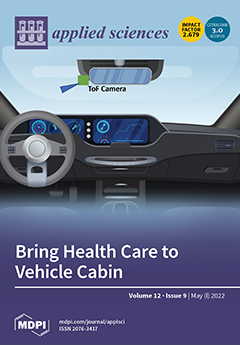In this study, leaf area prediction models of
Dendrobium nobile, were developed through machine learning (ML) techniques including multiple linear regression (MLR), support vector regression (SVR), gradient boosting regression (GBR), and artificial neural networks (ANNs). The best model was tested using the
[...] Read more.
In this study, leaf area prediction models of
Dendrobium nobile, were developed through machine learning (ML) techniques including multiple linear regression (MLR), support vector regression (SVR), gradient boosting regression (GBR), and artificial neural networks (ANNs). The best model was tested using the coefficient of determination (R
2), mean absolute errors (MAEs), and root mean square errors (RMSEs) and statistically confirmed through average rank (AR). Leaf images were captured through a smartphone and ImageJ was used to calculate the length (L), width (W), and leaf area (LA). Three orders of L, W, and their combinations were taken for model building. Multicollinearity status was checked using Variance Inflation Factor (VIF) and Tolerance (T). A total of 80% of the dataset and the remaining 20% were used for training and validation, respectively. KFold (K = 10) cross-validation checked the model overfit. GBR (R
2, MAE and RMSE values ranged at 0.96, (0.82–0.91) and (1.10–1.11) cm
2) in the testing phase was the best among the ML models. AR statistically confirms the outperformance of GBR, securing first rank and a frequency of 80% among the top ten ML models. Thus, GBR is the best model imparting its future utilization to estimate leaf area in
D. nobile.
Full article





